(Courtesy Durham County Library)
Duke Memorial Methodist began its existence as Main Street Methodist, located on the southeast corner of South Gregson Street and West Main Street. The Dukes, staunch Methodists, had been patrons of the church from its inception. When the growing church, with the support of the Dukes, sought to expand in the first decade of the 20th century, they looked to supplant the manse of the Duke's rival in the tobacco business, WT Blackwell, who had fallen on hard times.
In 1869, W.T. Blackwell partnered with John Green and John Day in the partnership that sparked the creation of Blackwell's Durham Tobacco Company. When joined by Julian Carr in 1871 (whose houses, Waverly Manor and Somerset Villa, I've posted on before) they expanded rapidly, becoming a major tobacco empire. In 1874, they built their Italianate factory building, which still stands at the north end of the American Tobacco Complex.
In 1875, W.T. Blackwell built himself a house at the high point of the ridge to the northwest, along the western portion of Green St., which was later renamed Chapel Hill Street, at the northwest intersection with Lee St., later Duke St.
(Courtesy Durham County Library)
(WT Blackwell's house bears somewhat of a resemblance to J.S. Carr's Waverly Manor. I'm not sure if this was deliberate imitation or simply the popularity of the Italianate style).
In the early 1880s, he fought to open the first Durham Graded School, personally paying the salaries of the teachers when funding failed. In 1886, he retired from his namesake tobacco company and started the Bank of Durham, which failed utterly in 1888, eliminating his assets. He continued to live in the house on West Chapel Hill St. and served in city government through the 1890s
The West End, 1891. WT Blackwell's house is on the northwest corner of Lee St. (now Duke) and Chapel Hill St. (As an aside, the only structures in the picture still standing today are the Duke Factory and some small houses on Gordon and Yancey Sts.)
(Courtesy Duke Archives)
The congregation at Main St. Methodist church (also posted on previously) was growing rapidly at the turn of the century and needed larger space. In 1906, they acquired Blackwell's house and property and moved the house. (My guess, from looking at the Sanborn maps, is that they moved the house across Duke St. and north of the corner, turning it so that it faced west.)
In 1907 they began work on their new church, which they called Memorial Methodist, a large steel-framed structure designed by an architect in New York. It was completed and occupied for its first service in 1912.
(Courtesy Durham County Library)
Sanborn map showing the church with the surrounding residential area. The Southern Conservatory of Music and the former church home at Main St. Methodist are shown on the lower right.
(Copyright Sanborn Company)
The church changed its name in 1925 to Duke Memorial Methodist, in honor of its primary benefactor, Washington Duke.
The church facility expanded westward in 1930 with the Gothic Revival Elementary Department, demolishing the two houses that stood to the west of the church, and again in 1964 with the Education Facility:
01.08.64.
- creating the current church campus that extends from Duke St. to Gregson St.
The church in December 2006:
Looking northwest, 01.30.08

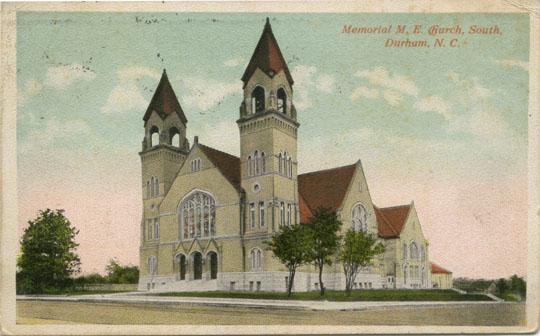
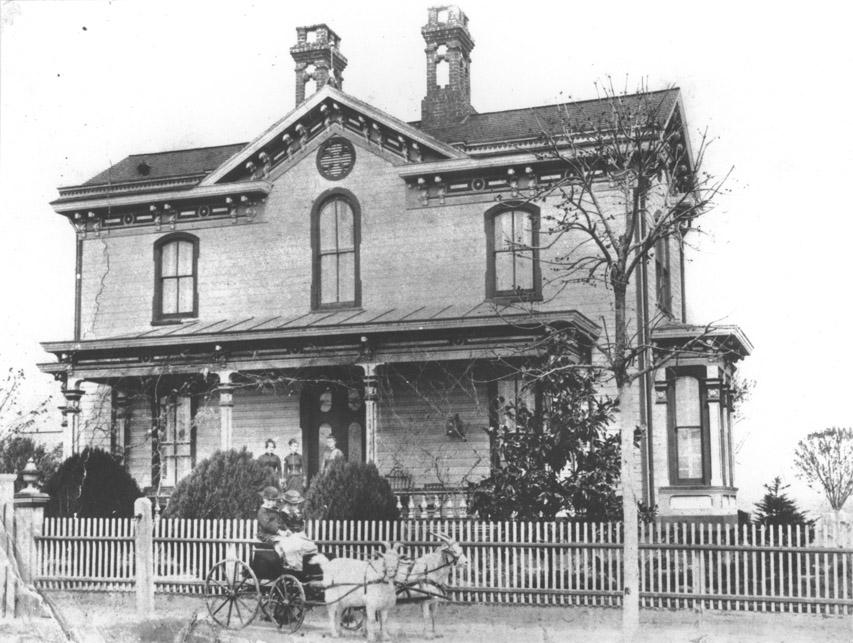
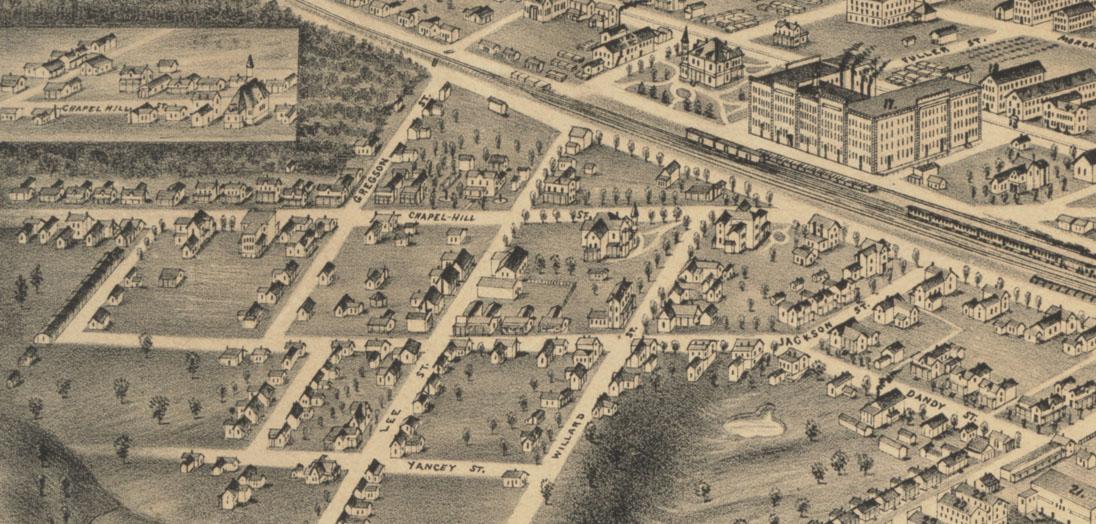
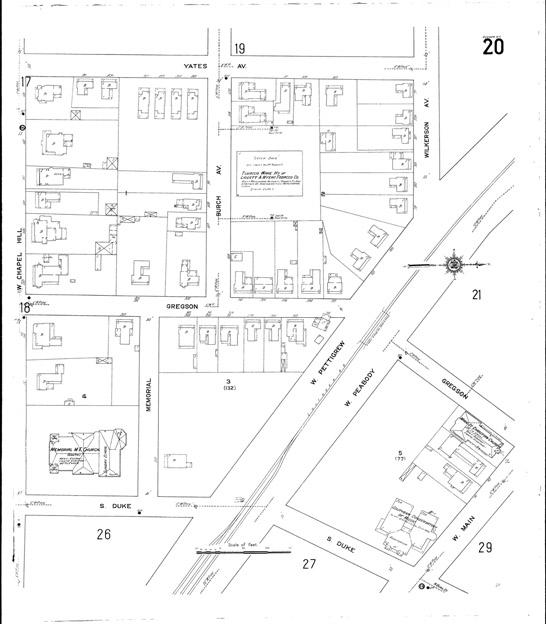
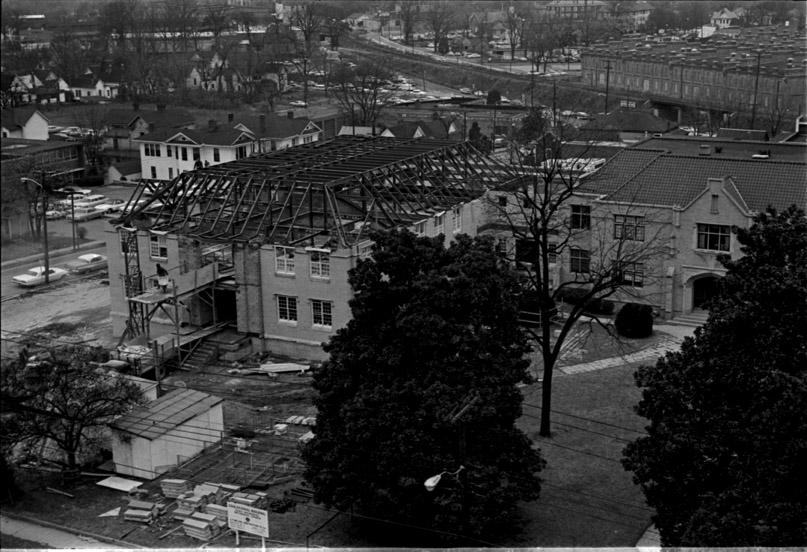
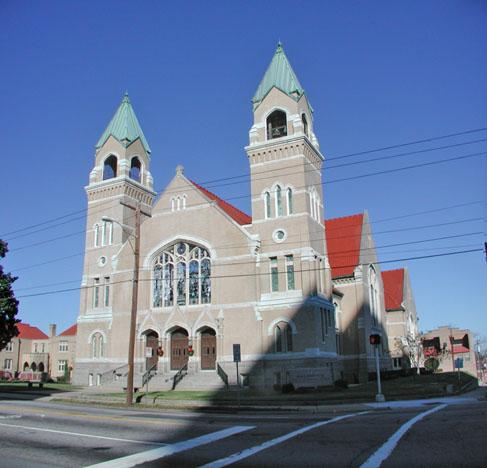
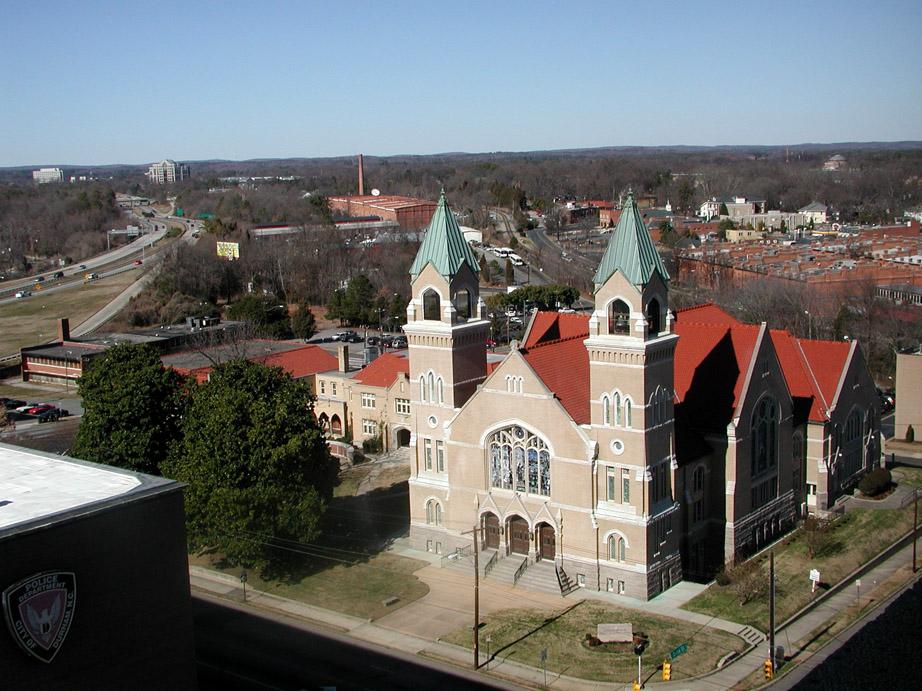
Comments
Submitted by Andrew (not verified) on Mon, 12/4/2006 - 5:55pm
Towards the end of his life, William Blackwell was said to have approached the Dukes (Ben in particular) for financial support -- that's how bad he was at banking.
Though I don't believe that Ben Duke is ever described as a ruthless businessman (that accolade surely belongs to his brother, Buck), he must have taken some satisfaction at watching the Methodist church erected on Blackwell's former property. The Dukes, of course, were Methodist while Blackwell was Baptist.
Though utterly ruined, Blackwell still has the last laugh: ironically, the lasting iconic image of the city of Durham is the bull, Blackwell's company logo.
--ASE.
Submitted by Sven (not verified) on Tue, 12/5/2006 - 2:08pm
Andrew
Great stuff - thanks for adding it. I knew of the Holy War between the Dukes and Blackwell/Carr, but I did not know that Blackwell had asked BN Duke for support. That must have been a very bitter pill to swallow.
GK
Submitted by Batman (not verified) on Sun, 2/21/2010 - 1:45pm
W.T. Blackwell's financial ruin was recorded in the NY Times on December 30, 1894. He appropriately elaborated on his role in building Durham, and then advertised "...next Saturday the last of my property will be sold and divided...I want to invite one and all to attend this great sale...I am left without a dollar, no financial standing, and no friends to brag of, and those I have, if any, have no financial standing to aid me...everything I possess is up (for sale) and you can never expect any more help or aid from your old friend...I am at the end of my row, and can't go one way or another"
Where did he live in the years following his bankruptcy?
Submitted by Gary (not verified) on Sun, 2/21/2010 - 3:22pm
Thanks for the info from the NYT, Batman. Blackwell appears to have moved across Duke St. to what was then 214 Chapel Hill St. (The northeast corner of Duke and Chapel Hill.) You can see that house at the far end of the row in the first picture of this post. Although this house bore some superficial resemblance to the WT Blackwell house, it appears to be a different house. I say this because some sources allude to the Blackwell house being moved across Duke St. after he died in 1903, sometime before Memorial was built. There is a two story house behind (to the north of) 214 along Duke St. in 1913 (after Memorial was built, and when the Sanborn maps adequately cover this area) which could be that house, but I don't have sufficient documentation to assert that. It is possible that sources confused Blackwell moving across the street with the house moving across the street. Someone out there probably has a better source to elucidate....
Submitted by Durhamite (not verified) on Sun, 7/22/2012 - 5:23pm
I previously stated Blackwell's pitiful plea, but I just remembered something about his tombstone from a previous Maplewood visit. So, as poor as the man was, I am impressed at his recovery. The tombstone shown in the website below is nice for someone with nothing; was there a last-minute economic recovery? Did the auction do exceptionally well, or did some forgotten well-to-do friend materialize? Maybe a Duke? (That is a joke :-) http://cemeterycensus.com/nc/durh/cempic.htm?cem=058&pic=058b0106.jpg
Submitted by gary on Sun, 7/22/2012 - 5:37pm
Durhamite - agreed that it ain't bad, but it rather pales in comparison to that of the Dukes, Wright, Carr et al. in Maplewood. Perhaps though, the friends that wouldn't bail him out in life felt rather guilty after he was gone. (Or perhaps he was only impoverished in comparison to his previous wealth, and still wealthier than 95% of Durham folk.)
Submitted by Durhamite (not verified) on Mon, 7/23/2012 - 1:36pm
Okay Gary...so the friends could have passed the hat and they all pitched in for a suitable eternal resting place. And, I might add, I believe it is in the same area of the cemetery as the Dukes and Staggs, so the "eternal neighborhood" is good. Begs the question...Who was the joke on?
Submitted by gary on Mon, 7/23/2012 - 1:44pm
"Eternal neighborhood" = awesome. Seems like a good place to start an apocryphal story about how Blackwell's headstone was moved to make way for the Duke mausoleum.
GK
Add new comment
Log in or register to post comments.